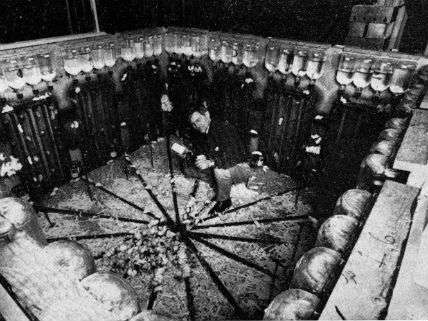Hey Population Doomsters. People Aren't Rats: New at Reason
Population density portends greater creativity, not collapse

Overcrowding was a big concern for 20th-century prophets of population doom. In 1962, National Institute of Mental Health researcher John Calhoun published an influential article, "Population Density and Social Pathology," in Scientific American. Calhoun had conducted experiments in which he monitored overcrowded rats. As population density increased, female rats became less able to carry pregnancies to full term—and they so neglected the pups that were born that most died. Calhoun also documented increasing behavioral disturbances among the male rats, ranging "from sexual deviation to cannibalism and from frenetic overactivity to a pathological withdrawal." All of these pathologies amounted to a "behavioral sink" in which infant mortality ran as high as 96 percent and populations sank toward extinction.
Calhoun's work was cited both by professional researchers and by overpopulation popularizers. American Public Health Association President Larry Gordon, for example, asserted in 1982 that "too many members of the human species are already being destroyed by violence in overpopulated areas in the same manner as suggested by laboratory research utilizing other animals." Explicitly referencing Calhoun's behavioral sink in his 1968 book, The Pump House Gang, hipster journalist Tom Wolfe riffed: "Overcrowding gets the adrenalin going, and the adrenalin gets them hyped up. And here they are, hyped up, turning bilious, nephritic, queer, autistic, sadistic, barren, batty, sloppy, hot-in-the-pants, chancred-on-the-flankers, leering, puling, numb…"
But now, in stark contrast to these visions of chaos and collapse, new research suggests that increased population density isn't a disaster at all. Indeed, it's channeling human efforts and aspirations in productive directions.
Hide Comments (0)
Editor's Note: As of February 29, 2024, commenting privileges on reason.com posts are limited to Reason Plus subscribers. Past commenters are grandfathered in for a temporary period. Subscribe here to preserve your ability to comment. Your Reason Plus subscription also gives you an ad-free version of reason.com, along with full access to the digital edition and archives of Reason magazine. We request that comments be civil and on-topic. We do not moderate or assume any responsibility for comments, which are owned by the readers who post them. Comments do not represent the views of reason.com or Reason Foundation. We reserve the right to delete any comment and ban commenters for any reason at any time. Comments may only be edited within 5 minutes of posting. Report abuses.
Please to post comments
Mute this user?
Ban this user?
Un-ban this user?
Nuke this user?
Un-nuke this user?
Flag this comment?
Un-flag this comment?